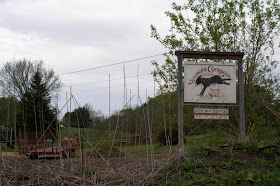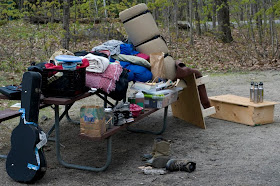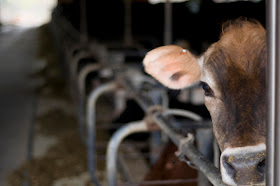
"The goats are definitely the heart of the operation. Everything begins and ends with them."

Talking to Stuart Osha at Turkey Hill Farm was a boon, and after leaving his place we meandered in our Element down a road with big trees on both sides that provided an overarching shade which dappled the sunlight on the road. Ah, beautiful Vermont!
We were on our way to Fat Toad Farm just down the road, owned and farmed by a small family with a couple of interns. Judith and Steve and Judith's daughter Calley created this venture about three years ago, intending to homestead for personal sufficiency and create goat products for monetary survival. Judith and Callie sat down with us and talked about what they do for an hour, then we got the grand tour with Judith.
Fat Toad Farm produces most of the vegetables the family eats in a year. They had a few goats a few years ago, which evolved into several goats, before they chose to create a business around them on the 20 acres that they lease. They currently milk about 45 goats.
Calley:
"Basically we evolved from lots of homesteading-type things and we gardened forever. Then we started getting chickens and pigs and sheep and goats...because, you know, once you have one thing that's so amazing you want to have everything else. So, that's always very dangerous and we ended up with about, I don't know, 12 goats about three years ago and thought, 'this is really too many for a hobby.' We were milking all of them. We thought, 'okay, we need to eaither make a business that is based on goats' milk, or we need to get rid of goats. And we decided to start a business!"
There are just a couple of products put out by the farm that are sold commercially: goat cheese and goat milk caramel (or cajete as it's called in Mexico where it originated). There are about 4 different varieties of chevre, all very delicious and creamy. The cajete is a fascinating niche product that is sold far and wide in the region; they are currently trying to expand their outlets and, in fact, Calley was on her way out of town to Connecticut with a trunk full of it on a marketing tour.
Calley:
"It's a traditional Mexican confection so [my sister] picked it up there and then came back and told us we should make it! It's quite a niche in fact; I mean there's one or two other places in the US doing it. Which has been great, except it's also a challenge because people are...we call it 'goats milk caramel' so people have a sense, but it's not...it's not true caramel. It's truly cajeta."
Judith and Steve invested most of their funds, including retirement, into this farm a few years ago with the vision that they could provide good fresh food for themselves and a few really good products for their friends, neighbors and the public and that they can (hopefully) make enough money to keep going and live on. They say that this third year will be the defining one.
We spoke about the significance of the small locally-based farm. Fat Toad is part of a small network of farms around Randolph Center that sell and tout each others' products and focuses. They are seeing stronger movements in younger generations interested in participating in small-scale farming. Why is there a small boom in small farms in the area?
Judith:
"So, Lilly and Maive down there, they're interns. You're getting a lot of young people who want to intern and really learn what the business is all about. And they've been able to figure out how to live with nothing, basically...I think that they're going to be looking for opportunities where they don't have to buy the land and build the house and build the barn, where they don't have to do all that initial investment, but where maybe they can take advantage of...there's a lot of people who own land who aren't doing anything with it and have pretty nice facilities and they're not doing anything with it. So, I think if that matchup could start happening, which maybe it will, you'll see a lot more possibility for people getting into farming."
Calley:
"I think at the end of the day it's the consumer's choice. And it's consumer education. And it's the connection...it's everything that we try to create n a small farm. You want people to care, you want...you want them to have food that's so good, you know, they've never had food that tasted so good. And the reason why is because it was cared for from day one to the end, you know, from the grass that the goats ate to the end of the goats' milk caramel or whatever product it is. There is no question; I mean, fresh, healthy food just tastes so good."
They work hard every day to make quality food and sell it so they can make some more and get by. They are an amazing team with interns to help make this relatively new farm a success.

















































